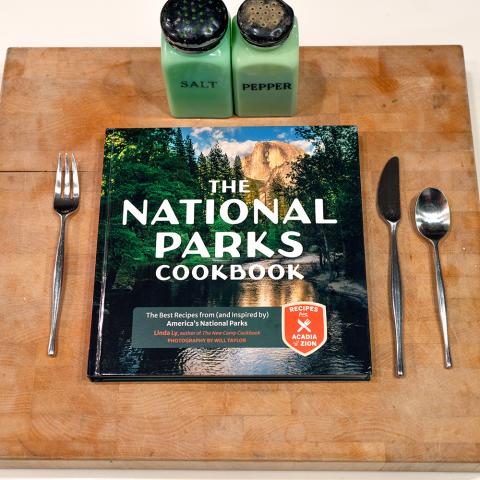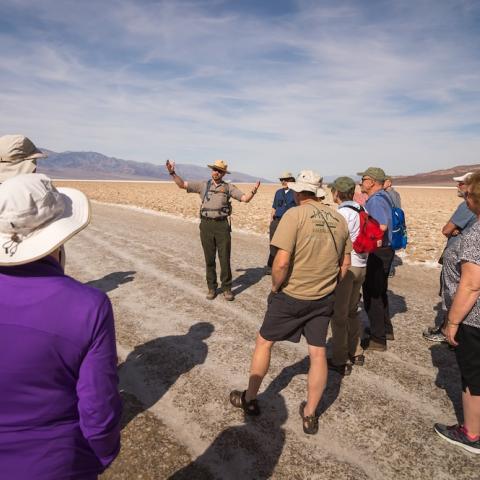
Aerial view of pot farm discovered in a remote area of Death Valley National Park/NPS
A pot farm roughly 40 acres in size has been discovered in a remote corner of Death Valley National Park by rangers.
The marijuana farm was found in Jail Canyon, a rarely-visited canyon on the western side of the Panamint Mountains in the California section of the Death Valley.
Park spokesperson Abby Wines said Friday evening that rangers flew over the site on Wednesday to both "photograph the extent and to (hopefully) encourage the growers to abandon the site."
Jail Canyon, which has been used by pot growers in the past, is temporarily closed for public safety reasons until park rangers can fully evaluate the area, she said.
Carbofuran and other dangerous chemicals have been found previously at marijuana grow sites in the park. In the past, growers have threatened hikers who have stumbled upon their illegal operations, a park release said.
“We are deeply saddened and concerned with the damage that these illegal activities cause,” said Barbara Durham, Traditional Historic Preservation Officer for the Timbisha Shoshone Tribe. “The natural and cultural resources in these areas are irreplaceable and invaluable, damaging them for profit shows incredible disrespect to our homeland.”
Marijuana grow sites significantly damage and destroy the park’s natural and cultural resources by introducing pesticides, land clearing, poaching, and waterway modifications. Although the climate of Death Valley may appear inhospitable to marijuana cultivation, over the past decade, hundreds of acres of marijuana have been illegally cultivated in the park.
“Preserving natural and cultural resources while providing an opportunity for the public to enjoy amazing places is at the core of our mission,” said Rob Wissinger, the park's chief ranger. “Seeing irreparable damage to a fragile ecosystem rich with rare natural and cultural resources is devastating.”
Few additional details were available Friday. Wines said no one was in custody and that the investigation was continuing.
Visitors to Death Valley’s most well-traveled areas are not at risk of finding a marijuana grow site. However, hikers in remote areas near water sources should remain alert, turn around and leave if they notice signs of suspicious activity, such as excessive amounts of trash, hillside terracing, or plastic irrigation tubing. Once safe, they should notify rangers at a visitor center or call the National Park Service tip line at 888-653-0009.
California legalized marijuana in 2016, but the federal government still classifies marijuana as a Schedule 1 controlled substance.




 Support Essential Coverage of Essential Places
Support Essential Coverage of Essential Places







Comments
Well, this article could leave the impression that NPT thinks Death Valley is the only national park in which this kind of grossly inappropriate and illegal activity takes place. I hope you recognize that it is, unfortunately, not. Illegal activity, from poaching, including the poaching of everything from ginseng to lumber and wildlife, to drug trafficking, to organized embeszzlement, to even organized sex trafficking and more; it all happens in national parks, just like it happens everywhere else. Only by shedding light on it and insisting that 1) it stop and 2) the perpetrators are held acountable will anything change. Hint, hint, hint.
Speaking of illegal and inappropriate behavior, does anyone know whether the vandalism reported in the Smithsonian article entitled "Racist Phrase Found Etched on Native American Petroglyphs in Utah" (https://www.smithsonianmag.com/smart-news/vandals-deface-native-american...) took place on lands that were stripped of protections when Trump and the Utah delegation essentially dismantled Bears Ears and Escalante/Grand Staircase National Monuments?
Any time we have an area vast enough - and, often, wild enough - to get lost in, people will hide stuff there. Human nature.
California allows illegal grows all over the state. Our lands are being destroyed by these grows. The state needs to arrest and imprison these abusers. Instead they scare the criminals off and then remove the destruction of illegal grows. If we made them pay the price the destruction would be less and not as many criminals would start illegal grows.
Open the canyon trails to vehicles again and this would cut down on the grows
Birthing Rock is on BLM land is protected by federal law. It's not on land that would have been in either of the two national monuments.
CJ - not that it would have made any difference. Lord knows we have had plenty of vandalism on lands that were in Nationl Monuments and/or National Parks.
"Open the canyon trails to vehicles again and this would cut down on the grows". So true, "anonymous". Not gonna happen, however, my friend. Their goal is to keep us in the tourist sections of the park, and locked out to areas, unless you can reach them on foot.